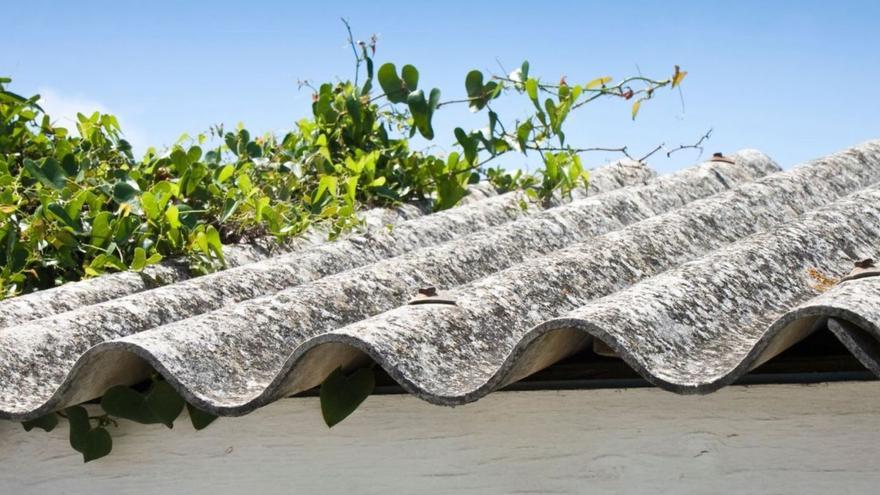
The Council of Tenerife launches a new battle to put an end to asbestos on the Island once and for all, a very carcinogenic element used in construction in the past. The area of Sustainable Development and the Fight against Climate Change offers financial aid to Tenerife’s municipalities for carrying out a census to identify and locate those facilities and locations where there is asbestos, including a calendar for planning its removal.
Despite the multiple warnings about the need to remove asbestos, most public administrations have not created a map of the buildings and public and private infrastructures that have this construction material on the Island. And this despite the fact that it has been known to cause cancer since the 1930s and that the World Organization for Health classified it as a toxic material no less than 46 years ago. Spain prohibited its commercialization in 2002 but Tenerife accumulates a delay of decades in the fight against asbestos. Only the Ministry of Education has reported the possible existence of uralita – it is known by the name of the company that began to market it in Spain – in 18 schools. In fact, he has a plan in place for his withdrawal, among which is aa performance at IES Manuel gonzalez Pérez de La Orotava, where the presence of this material has already been confirmed.
The aid created by the Tenerife Council, included in the Strategic Subsidies Plan for this year, was approved at the last Island Government Council, with a budget of 387,500 euros to be distributed among the municipalities that request it.
The new Law 7/2022, of April 8, on waste and contaminated soils for a circular economy, establishes among its general objectives the reduction of the generation and management of waste in favor of human health and the environment, as well as the raising awareness about the problem of the use of asbestos and the need to locate and dismantle the infrastructures or facilities that still contain it, strengthening the prevention of hazardous domestic waste by including measures to contribute to the Sustainable Development Goals, reported the Island Corporation in a statement.
The rule requires that within one year from the entry into force of the law, the municipalities will have to draw up a census of facilities and locations with uralita including a calendar that plans its withdrawal. Both the census and the calendar, which will be public, will be sent to the competent health, environmental and labor authorities of the autonomous communities, which they must inspect to verify, respectively, that they have been withdrawn and sent to an authorized manager.
This withdrawal will prioritize the facilities and locations according to their degree of danger and exposure to the most vulnerable population. In any case, the public facilities or locations with the highest risk must be managed before 2028, says the Cabildo.
878 island workers are exposed to this harmful material
Asbestos, also called asbestos or uralite, is a material made up of fibers of a mineral that is found in nature. In the Archipelago it was widely used in construction, especially in the 1960s. Its main qualities are its capacity for thermal insulation, malleability and resistance. Therefore, asbestos in Greek means indestructible and imperishable. It is a material that, if it does not fracture or wear out, is not harmful to health, but it is when it remains suspended in the air. Those who suffer the most from its serious health consequences are the workers who have to handle it in order to extract it. The health of people who work with asbestos should be checked regularly. The Health Surveillance Program for Workers Exposed to Asbestos (Pivistea), created in 2003, is in charge. Canary Islands There are 878 workers registered in the health monitoring of Pivistea -latest data published referring to the year 2018-, more than in the Balearic Islands (487 less), Extremadura (369 less) or La Rioja (363). In Spain, in total, there are 57,876 workers who are or have been exposed to asbestos. The Canary Islands only have one unit to detect pathologies related to asbestos in this program and 9 centers for the prevention of diseases caused by fiber outside the public health system. | DE
















